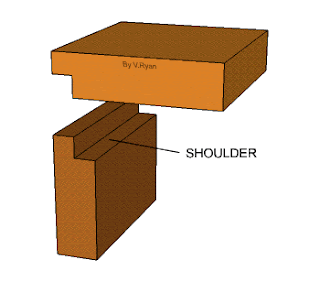Rebate Joint
Rebate
Joint
The rebate joint also call the rabbet.
The word rabbet is from Old French rabbat, "a recess
into a wall", and rabattre "to beat down". According
to the Oxford English Dictionary, "In North America the more usual form
is rabbet". The form "rebate" is often
pronounced the same way as "rabbet".
A rabbet or rebate is
a recess or groove cut into the edge of a piece of machinable material,
usually wood. When viewed in cross-section, a rabbet
is two-sided and open to the edge or end of the surface into which it is cut.
An example of the use of a rabbet is
in a glazing bar where it makes provision for the insertion of the pane of
glass and putty. It may also accommodate the edge of the back panel of a
cabinet. It is also used in door and casement window jambs,
and for shiplap planking. A rabbet can be used to
form a joint with another piece of wood (often containing a dado).
How to Make Rebate Joints
|
Step1: The
first thing you do when making a rebate joint is measure and cut two pieces
of timber to the size or sizes you need.
|
Step2: Make sure the ends
of your timber are flush then get the piece you want your rebate in and mark
out the width of the joint the same as the thickness of your second piece of
timber.
Now mark another line on your first piece of timber about half
its depth and mark around each side of the timber.
|
|
|
|
|
Step4: You
can use a chisel to clean out your rebate if the timber you insert does not
sit flat in the joint.
|
Step5: If
your joint is flush and square secure it together with adhesive. Nails or
screws can be added to increase strength or dowel can also be used but the
holes must be accurately drilled before you start step 5.
|








Comments
Post a Comment